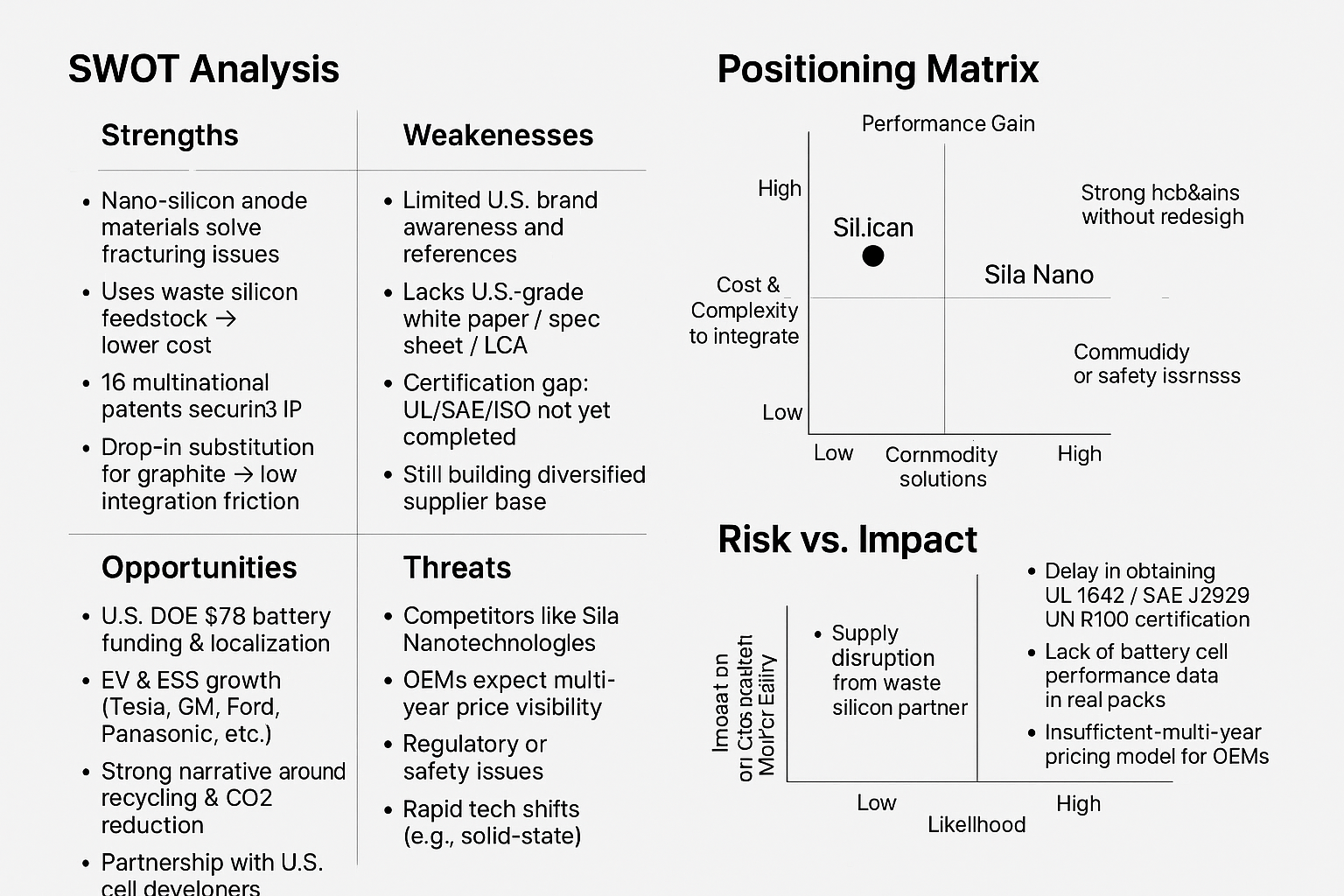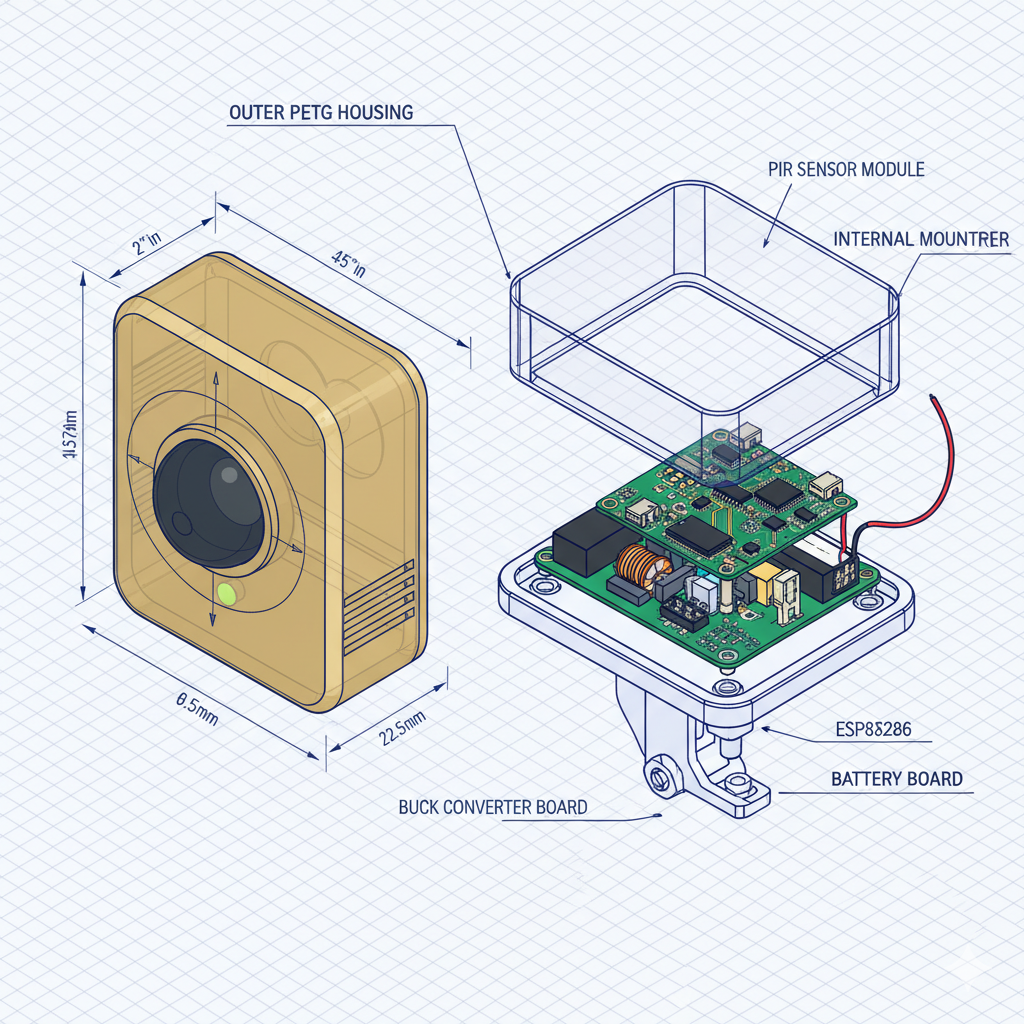Metal Byproduct Analysis → Monetizable Supply Chain Loops
-
I noticed Machina was discarding high-value metal that could be repurposed or monetized. The gap was clear: scrap was treated as waste, but it held unrealized financial and strategic potential.
-
I mapped out multiple value pathways — from tax-advantaged donations to converting scrap into powder-metal feedstock and forming research partnerships. I structured the analysis into a clear, data-backed proposal showing where and how value could be recovered.
-
I tightened cost models, validated operational constraints, and refined the strategy based on realistic throughput, material behavior, and market viability. The final version balanced feasibility, margin potential, and execution simplicity.
-
The strategy reframed scrap as a low-cost, high-leverage asset — opening opportunities for reduced waste expense, new revenue channels, and stronger ESG positioning. It turned a passive loss into an active business advantage.
Taiwanese Nano-Silicon Startup → U.S. Market
-
I noticed Machina was discarding high-value metal that could be repurposed or monetized. The gap was clear: scrap was treated as waste, but it held unrealized financial and strategic potential.
-
I mapped out multiple value pathways — from tax-advantaged donations to converting scrap into powder-metal feedstock and forming research partnerships. I structured the analysis into a clear, data-backed proposal showing where and how value could be recovered.
-
I tightened cost models, validated operational constraints, and refined the strategy based on realistic throughput, material behavior, and market viability. The final version balanced feasibility, margin potential, and execution simplicity.
-
The strategy reframed scrap as a low-cost, high-leverage asset — opening opportunities for reduced waste expense, new revenue channels, and stronger ESG positioning. It turned a passive loss into an active business advantage.
Market Research & Positioning
Conducted full competitive analysis (Sila, Panasonic, LG, SK, graphite suppliers) to identify gaps and opportunities
Sustained SiLican’s 16-patent IP portfolio
Built a U.S.-focused value narrative around durability, cost reduction, and sustainability
Supply Chain & Market Entry Strategy
Mapped a 3-stage entry model: Export → Pilot Cell Validation → U.S. Manufacturing
Identified DOE funding opportunities from the $7B U.S. battery infrastructure initiative
Determined supply-chain risks & proposed fixes (e.g., securing ≥2 recycled silicon suppliers)
Created a customer segmentation pipeline targeting EV, ESS, and consumer-electronics OEMs
EV: Tesla, GM, Ford
Batteries: Panasonic, LG Chem, SK Innovation
Electronics: Apple, Samsung
Results & Impact
Delivered a complete U.S. go-to-market blueprint, enabling SiLican to begin U.S. partnership outreach
Produced the startup’s first formal market-analysis deliverables, improving clarity for investors & U.S. partners
Strengthened SiLican’s pitch with a clear competitive position vs Sila Nanotechnologies
Provided strategic guidance that reduced perceived entry risk for SiLican and clarified the path to U.S. validation
Game Control → Sold at 17
-
Pickup basketball has a chronic misinformation problem—everyone swears they “just checked” and every court is magically both full and open at the same time. I realized the chaos wasn’t from players but from the complete lack of live visibility. So I set out to give parks a simple, reliable source of truth using sensors instead of gossip.
-
I engineered a simple motion-sensing device that could attach to any court and instantly report availability to an app. No overbuilt IoT ecosystem, just a straightforward “court active or not” signal. Think traffic lights, but for hoopers.
-
I iterated through prototypes that survived everything from weather to full-speed basketballs. Along the way, I tuned the sensitivity so a random leaf wouldn’t mark a court as “full.” The app UI also got a glow-up so anyone could check court status in two seconds flat.
-
The system helped local players skip the guesswork and show up exactly when courts were open. Community groups picked it up quickly because it reduced crowding and arguments. The traction led to the company being acquired when I was 17—which was great, except nobody warns you that your first sale comes with taxes.
Market Research & Positioning
Identified a widespread friction point: players wasted time guessing court availability across public parks
Conducted observational research to understand usage patterns, peak times, and failure points in existing “word-of-mouth” systems
Positioned Game Control as a low-cost, high-accuracy alternative to rec-center scheduling systems and inaccurate community reports
Built a value narrative around reducing wait time, improving play consistency, and removing on-court disputes
Supply Chain & Market Entry Strategy
Designed a plug-and-play motion-sensing device to detect court activity and transmit a simple active/free signal.
Developed a lightweight mobile interface showing live court status, updated in seconds.
Iterated through multiple prototypes to improve durability (weatherproofing, impact resistance, false-trigger filtering).
Created a scalable deployment model enabling rapid installation across parks without complex infrastructure.
User Segmentation & Use Cases
Recreational Players: Reduce uncertainty and maximize playable time.
Youth Programs / Coaches: Reserve practice windows without needing staff on-site.
Rec & Park Departments: Monitor usage trends, reduce disputes, and improve community experience.
Community Apps: Integrate with existing sports platforms for real-time availability data.
Results & Impact
Delivered a complete MVP ecosystem: hardware sensor, backend logic, and live availability app.
Eliminated court-guessing and reduced on-site conflicts by providing a single source of truth.
Demonstrated strong local traction, leading to early acquisition before the founder turned 18.
Validated the model for broader smart-park infrastructure and community sport analytics.












